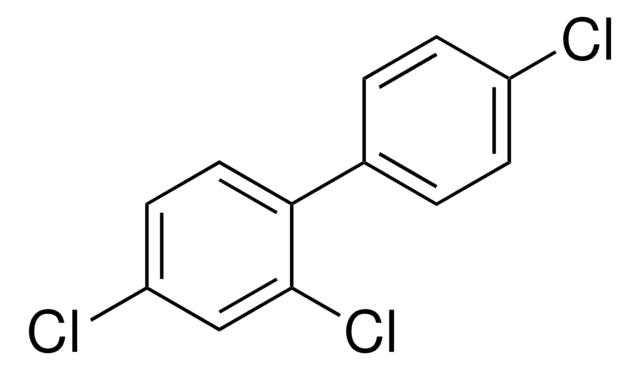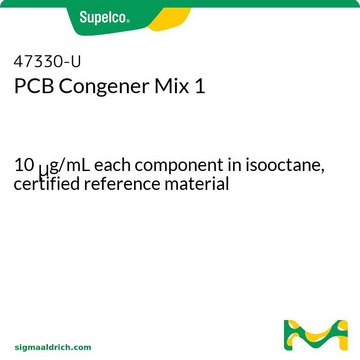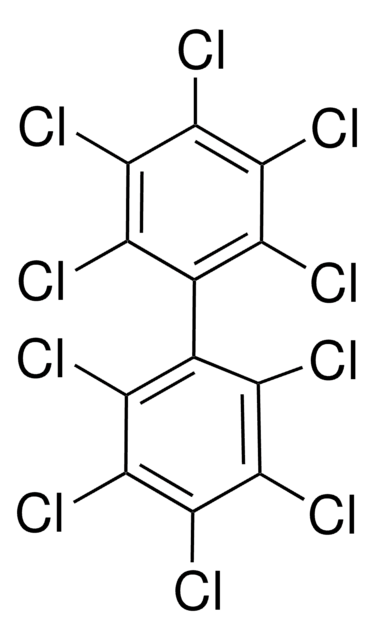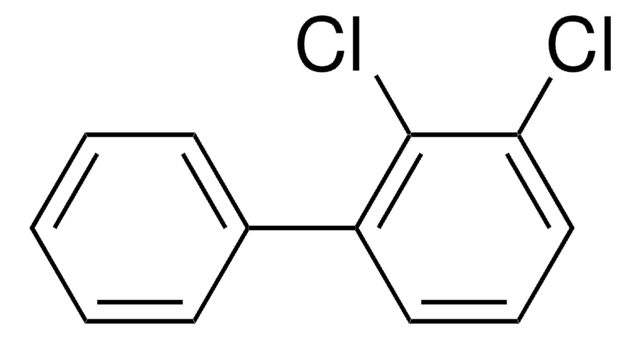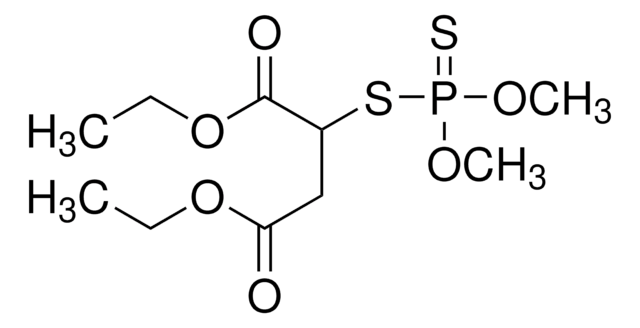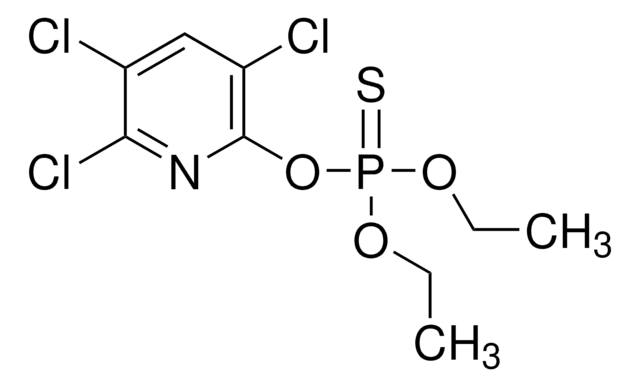推荐产品
一般描述
Polychlorinated biphenyls (PCBs) are groups of chemical compounds which are persistent in the environment and are considered highly toxic to humans and animals. PCB No 2 may be used for environmental analysis and precise quality control of food and feed.
应用
Refer to the product′s Certificate of Analysis for more information on a suitable instrument technique. Contact Technical Service for further support.
推荐产品
Find a digital Reference Material for this product available on our online platform ChemisTwin® for NMR. You can use this digital equivalent on ChemisTwin® for your sample identity confirmation and compound quantification (with digital external standard). An NMR spectrum of this substance can be viewed and an online comparison against your sample can be performed with a few mouseclicks. Learn more here and start your free trial.
警示用语:
Warning
危险声明
预防措施声明
危险分类
Aquatic Acute 1 - Aquatic Chronic 1 - STOT RE 2
储存分类代码
11 - Combustible Solids
WGK
WGK 3
闪点(°F)
Not applicable
闪点(°C)
Not applicable
个人防护装备
dust mask type N95 (US), Eyeshields, Gloves
法规信息
危险化学品
Role of commensal relationships on the spatial structure of a surface-attached microbial consortium.
A T Nielsen et al.
Environmental microbiology, 2(1), 59-68 (2001-03-13)
A flow cell-grown model consortium consisting of two organisms, Burkholderia sp. LB400 and Pseudomonas sp. B13(FR1), was studied. These bacteria have the potential to interact metabolically because Pseudomonas sp. B13(FR1) can metabolize chlorobenzoate produced by Burkholderia sp. LB400 when grown
R H Adams et al.
Applied and environmental microbiology, 58(2), 647-654 (1992-02-01)
Recombinant Pseudomonas sp. strain CB15, which grows on 3-chlorobiphenyl (3CB), was constructed from Pseudomonas sp. strain HF1, which grows on 3-chlorobenzoate, and from Acinetobacter sp. strain P6, which grows on biphenyl, by using a continuous amalgamated culture apparatus. DNA from
M W Kennedy et al.
Biochemical pharmacology, 29(5), 727-736 (1980-03-01)
In vitro rat hepatic microsomal metabolism of the monochlorobiphenyls (MCBs) 2-, 3- and 4-chlorobiphenyl, has been investigated as a model for the metabolism of polychlorinated biphenyl pollutants. MCB metabolism was catalyzed by cytochrome P-450, as indicated by a dependence on
B P Maliwal et al.
Journal of lipid research, 23(3), 474-479 (1982-03-01)
The uptake, distribution, and exchange of chlorinated hydrocarbon insecticides (dieldrin and chlordecone) and biphenyls (2,4,5-2',4',5'-hexachlorobiphenyl and 3-chlorobiphenyl) among human lipoproteins was examined by fluorescence quenching, gel filtration, and ultrafiltration. The chlorinated hydrocarbons were rapidly taken up from solution or silica
F Fava et al.
Applied microbiology and biotechnology, 36(2), 240-245 (1991-11-01)
A mixed bacterial culture obtained from polychlorinated-biphenyl-contaminated river sediments proved capable of degrading 3-chlorobiphenyl (3-CB) under aerobic laboratory conditions. Almost total mineralization of 150 mg/l of 3-CB occurred when, after 3 days of incubation, the mineral medium was supplied with
我们的科学家团队拥有各种研究领域经验,包括生命科学、材料科学、化学合成、色谱、分析及许多其他领域.
联系技术服务部门
